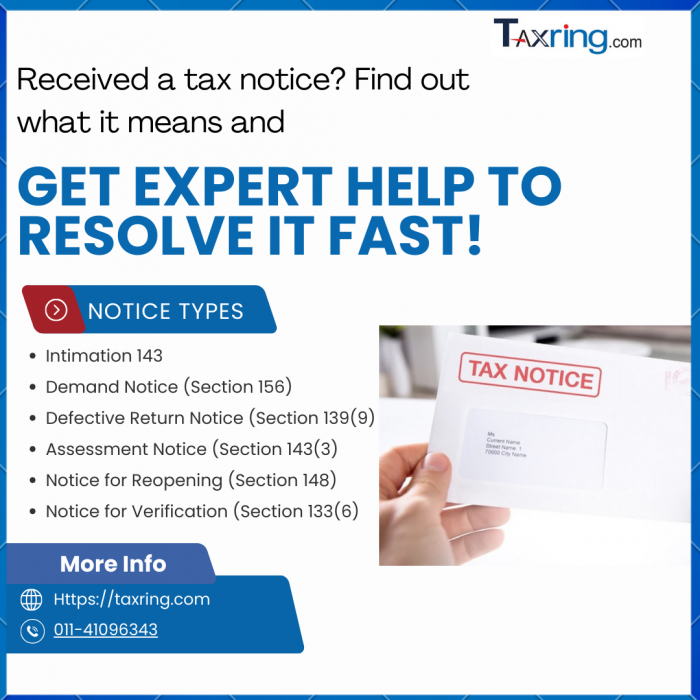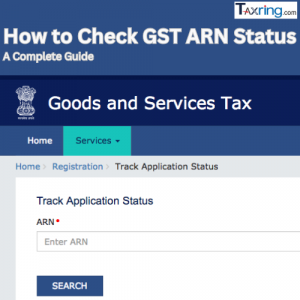
Expert Help for Income Tax Notices: Types and Solutions
Understanding Income Tax Notices: A Comprehensive Guide
Navigating the world of income tax can sometimes lead to receiving an income tax notice. Whether you’re a seasoned taxpayer or new to tax matters, understanding what an income tax notice is, why you might receive one, and how to respond is crucial for maintaining compliance and avoiding stress.
What is an Income Tax Notice?
An income tax notice is an official communication from the Income Tax Department. It is sent to inform taxpayers about issues related to their tax returns, such as discrepancies, missing filings, or additional documentation requirements. Receiving a notice is a common part of the tax process and is not necessarily a cause for alarm. It's essentially a request for clarification or additional information to ensure that your tax return is processed accurately.
Reasons for Receiving an Income Tax Notice
There are several reasons you might receive an income tax notice:
- Errors in Filing: Mistakes in your income tax return, such as incorrect figures or misreported income.
- Missing Returns: If you’ve failed to file your tax return for a particular year or period.
- Discrepancies: Differences between the income reported in your tax return and the information available to the tax department.
- Additional Information: Requests for further documentation to substantiate claims or deductions.
Understanding Different Types of Income Tax Notices
Receiving an income tax notice can be confusing, but knowing what each type of notice means and how to respond can make the process smoother. Here’s a simple guide to the different types of income tax notices you might encounter:
1. Notice Under Section 143(1): Intimation Notice
What It Is: This is a preliminary notice sent after your income tax return is processed. It highlights any errors or inconsistencies found in your return.
Why You Might Get It: If there are mistakes in your return, such as calculation errors or discrepancies in reported income.
What You Need to Do: Carefully review the notice. You usually have 15 days to correct the errors and submit the updated information.
2. Notice Under Section 142(1): Inquiry Notice
What It Is: This notice requests additional information or documents needed to complete the assessment of your tax return.
Why You Might Get It: When the tax department needs more details to verify your return or support your claims.
What You Need to Do: Provide the requested documents and information by the deadline specified in the notice.
3. Notice Under Section 139(1): Defective Return Notice
What It Is: Issued if your tax return has defects or is incomplete.
Why You Might Get It: If your return has missing details, incorrect information, or is not properly filled out.
What You Need to Do: Correct the defects and resubmit your return within 15 days to avoid further issues.
4. Notice Under Section 143(2): Scrutiny Notice
What It Is: A notice for a detailed examination of your tax return. This is a more in-depth review.
Why You Might Get It: If your return is selected for a detailed audit, often due to discrepancies or random selection.
What You Need to Do: Provide additional information or documents as requested. You might also need to attend a personal hearing.
5. Notice Under Section 156: Demand Notice
What It Is: This notice demands payment for any outstanding tax, interest, or penalties.
Why You Might Get It: After the assessment, if you owe any additional tax or interest.
What You Need to Do: Pay the specified amount promptly to avoid further penalties or legal action.
6. Notice Under Section 245: Adjustment Notice
What It Is: A notice about adjustments related to tax demands or refunds.
Why You Might Get It: When there are changes or corrections to your previous tax payments or refunds.
What You Need to Do: Review the adjustments and respond within 30 days if you have any objections or need further clarification.
7. Notice Under Section 148: Income Escaping Assessment Notice
What It Is: Issued when the tax department believes that some income was not reported or was underreported.
Why You Might Get It: If there is a suspicion that income has been omitted from your return.
What You Need to Do: File a return for the specific year mentioned in the notice or provide an explanation if you believe there’s been a misunderstanding.
How Taxring Can Help
Navigating these notices can be challenging, but you don’t have to do it alone. Taxring’s experts are here to help you:
- Understand Your Notice: We’ll explain what the notice means and what actions are required.
- Prepare Your Response: We assist in gathering the necessary documents and drafting a clear response.
- Provide Ongoing Support: From initial review to final resolution, we’re with you every step of the way.
Contact Us Today
If you’ve received an income tax notice and need professional assistance, reach out to Taxring. We’re here to make the process easier and ensure you comply with all requirements.
This explanation simplifies the types of notices, their purposes, and what actions are needed, making it easier for users to understand and take the necessary steps.
Methods for Serving Income Tax Notices
Income tax notices can be served in a few different ways:
- Physical Mail: Traditionally, notices are sent to your registered address through postal services.
- Electronic Mail: Notices may also be sent electronically via email or through the Income Tax e-filing portal.
Make sure to check both your physical mail and your e-filing account regularly to ensure you don’t miss any important communications.
Steps to Take After Receiving an Income Tax Notice
Receiving an income tax notice can be overwhelming, but following these steps can help you address it effectively:
- Read the Notice Carefully: Understand the reason for the notice and the action required. Pay attention to deadlines.
- Gather Relevant Documents: Collect all necessary documents, such as income statements, previous tax returns, and receipts for deductions.
- Prepare a Response: Draft a clear and accurate response addressing the issues highlighted in the notice. Include any requested documents.
- Submit Your Response: Follow the instructions provided in the notice to submit your response either online or through physical mail.
- Follow Up: Ensure that your response has been received and processed. Keep track of any further correspondence from the tax department.
Documents Required to Reply to an Income Tax Notice
The documents you need to provide will depend on the nature of the notice. Commonly required documents include:
- Income Proof: Salary slips, bank statements, or income certificates.
- Tax Returns: Copies of previous years’ tax returns.
- Receipts and Invoices: Proof of deductions or expenses claimed.
- Supporting Statements: Any additional statements or affidavits requested by the tax department.
Ensure that all documents are accurate and complete to facilitate a smooth resolution.
How Taxring Can Assist with Your Income Tax Notice
Handling an income tax notice can be complex and stressful, but Taxring is here to help. Our team of tax experts provides:
- Expert Analysis: We carefully review your income tax notice to understand the issues and requirements.
- Document Preparation: Assistance with gathering and preparing the necessary documents to respond effectively.
- Response Drafting: Crafting a clear and comprehensive response to address the notice.
- Ongoing Support: Continuous support throughout the process, including follow-ups and communication with the tax department.
By partnering with Taxring, you can ensure that your response is handled professionally and that you are fully compliant with tax regulations.
Contact Us Today
For personalized assistance with your income tax notice, contact Taxring. Our experts are ready to guide you through every step, ensuring peace of mind and compliance with tax requirements.
- Read also - How to check your TDS Refund?
- Income Tax Audit under section 44ab
- How to Respond to a Defective Return Notice?139-(9)
- How to Revised Income Tax Return: Section 139(5)




